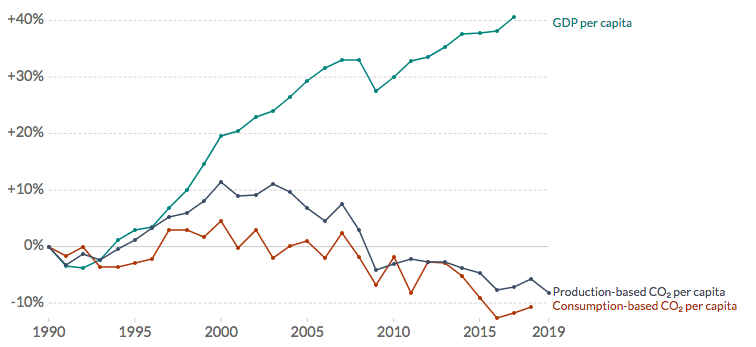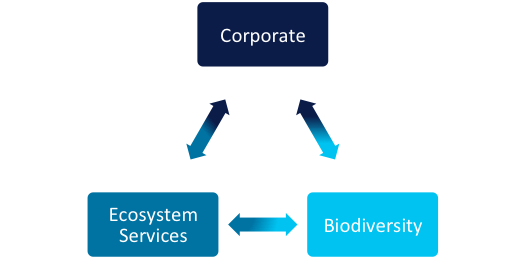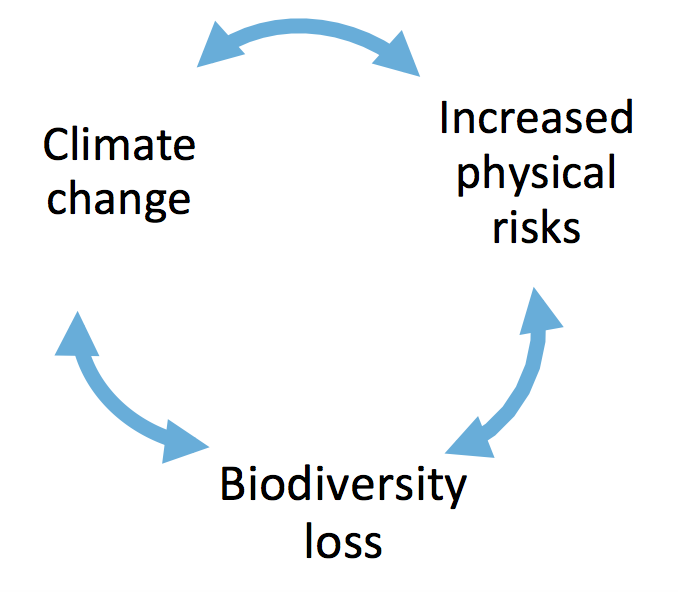In the responsible investment lexicon, the concept of the carbon footprint is widely accepted as an important metric for analyzing an organization’s activities as expressed as a weight of carbon dioxide (CO2) emissions.
You might be surprised to learn that part of its origin is a Made-in-Canada story. In 1996, Canadian academic Dr. William Rees published Our Ecological Footprint alongside his then-student Mathis Wackernagel. The book and the concept of “ecological footprints” laid the foundations for the development of quantitative tools to measure human impact on the environment.
However, the popularization of the term “carbon footprint” has a stranger genesis: a PR campaign in the early 2000s by British Petroleum (BP) called Beyond Petroleum. During this time, critics say in publications like The Guardian, BP shifted the onus to consumers rather than large-scale companies that could effect real change. During this time, BP unveiled a “carbon footprint calculator” so consumers could assess how their routines could be responsible for global warming.
Today, measuring carbon footprint has become an effective way for ESG analysts to benchmark and compare companies and industries. It has also become an increasingly popular screening tool within responsible investment funds.
For performance- and perception-based reasons described below, I believe that carbon-based screening should be more frequently adopted by fund providers and sought after by investors when choosing responsible investment funds.
Low carbon screens and performance
On a one-year basis, strategies that screen for low-carbon emissions appear to have generally done better than “vanilla” strategies that do not screen for carbon footprint. The below example is a category screen of Canadian-listed global equity ETFs, where I have removed those with thematic and environmental, social and governance (“ESG”) and/or responsible investing (“RI”) mandates using Morningstar Direct data. I then compare them to the Canadian global equity universe that consists of ESG/RI strategies, and finally, the green bar represents the subset of ESG/RI strategies that use a carbon-screen.
Performance by Screen
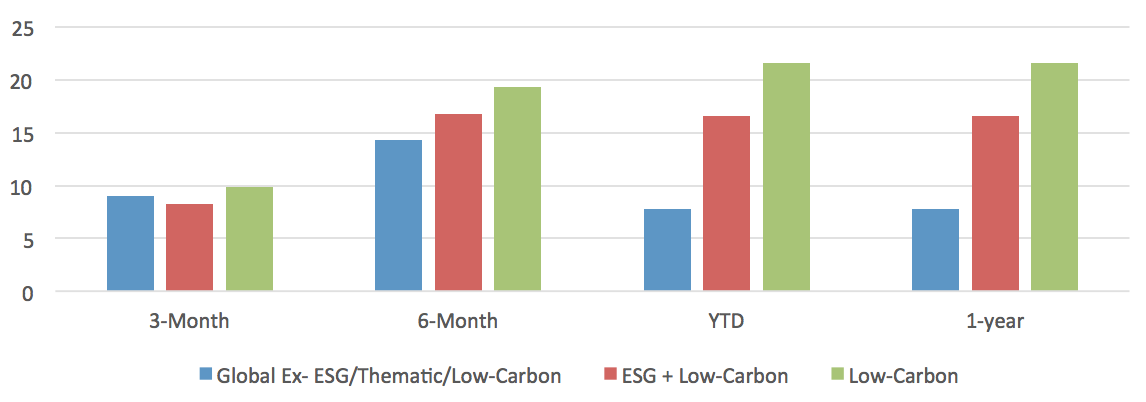
| 3-Month | 6-Month | YTD | 1-year | |
| Global Ex- ESG/Thematic/Low-Carbon | 9.03 | 14.26 | 7.8 | 7.8 |
| ESG + Low-Carbon | 8.27 | 16.81 | 16.54 | 16.54 |
| Low-Carbon | 9.82 | 19.3 | 21.62 | 21.62 |
Source: Morningstar Direct, as at December 31, 2020
The indicated rates of return are the historical annual compounded total returns including changes in per unit value and reinvestment of all dividends or distributions and do not take into account sales, redemption, distribution or optional charges or income taxes payable by any securityholder that would have reduced returns. The rates of return shown in the table are not intended to reflect future values of the ETFs or returns on investment in the products.
The low-carbon screen added to an existing ESG mandate further amplified returns (low carbon alone seems to have outperformed ESG+Low-Carbon). My assumption is the complete elimination of fossil fuel production companies resulted in eliminating a key sector of performance drag in 2020. Of course, with a nascent rally in fossil fuel stocks — most notably energy stocks in the latter end of 2020 — I see some cyclical bounce-back in the non-ESG/RI category of equity mandates in Canada.
Beyond the recent performance data, there are transformative societal shifts that are taking place that will likely amplify this trend. Growing international cooperation and government policy initiatives including carbon taxing, increased scrutiny and disinvestment from fossil fuel extractors, as well as the continued market dominance of the comparatively less carbon-intensive technology sector are all important factors that have favored low-carbon companies.
Key considerations for funds
Even amidst the current COVID-19 pandemic, Canadians have highlighted that climate change continues to be viewed as an “extremely serious” issue that we face. As it relates to investing, according to the Responsible Investment Association’s 2020 Investor Opinion Survey, 72% of Canadian investors are interested in responsible investing, which incorporates social, environmental and governance factors.
I believe carbon footprint screens are a necessary and objective measurement for a truly environmentally responsible portfolio, as it provides consumers with the full context of how their holdings positively or negatively affect the environment.
Currently, there are multiple ESG-labelled funds available that include high-carbon-footprint companies, including within the oil and gas industry. While some may be pursuing initiatives to lessen impact, it is my view that fossil fuel extractors are not environmentally-aligned companies – especially when the top 20 companies that have contributed to carbon dioxide emissions from 1965 to 2017 – 480 billion tonnes worth – are all fossil fuel extractive companies.
As part of a carbon- and emissions-intensive industry, I believe these companies are not likely to be found represented within a fund that utilizes low-carbon methodologies and screening. I also believe it unlikely that an investor, concerned about the environmental impact of their portfolio, would choose a fund identified as environmentally conscious that includes major polluters.
Conclusion
It is important to note there isn’t a one-size-fits-all approach to carbon screening. For instance, in addition to other screening methodologies, including a prohibition on fossil fuel producers, companies held within the Horizons Global Sustainability Leaders Index ETF (ETHI) must have a carbon efficiency that puts them within the top one-third of companies in their respective industry. ETHI is not alone with this screen. Other carbon-based screens, including those with a capped emissions threshold, might not hold some of the companies held within ETHI, deeming the global giants it holds, like Apple, to have too high of a carbon footprint for its criteria.
Ultimately, I see carbon screens as an effective tool that has not only contributed to evidenced recent outperformance compared to non-carbon screened funds,[1] but also heightens the legitimacy and perception of environmentally-aligned investment methodologies. I encourage fund providers to consider a wider adoption of carbon-based screening in their responsible investment portfolios and for investors that are concerned about the environmental impact of their portfolios to actively seek funds that do include them.
Commissions, management fees and expenses all may be associated with an investment in the Horizons Global Sustainability Leaders Index ETF (the “ETF”) managed by Horizons ETFs Management (Canada) Inc. The ETF is not guaranteed, its values change frequently and past performance may not be repeated. The prospectus contains important detailed information about the ETF. Please read the prospectus before investing.
[1] Morningstar Direct, as at December 31, 2020
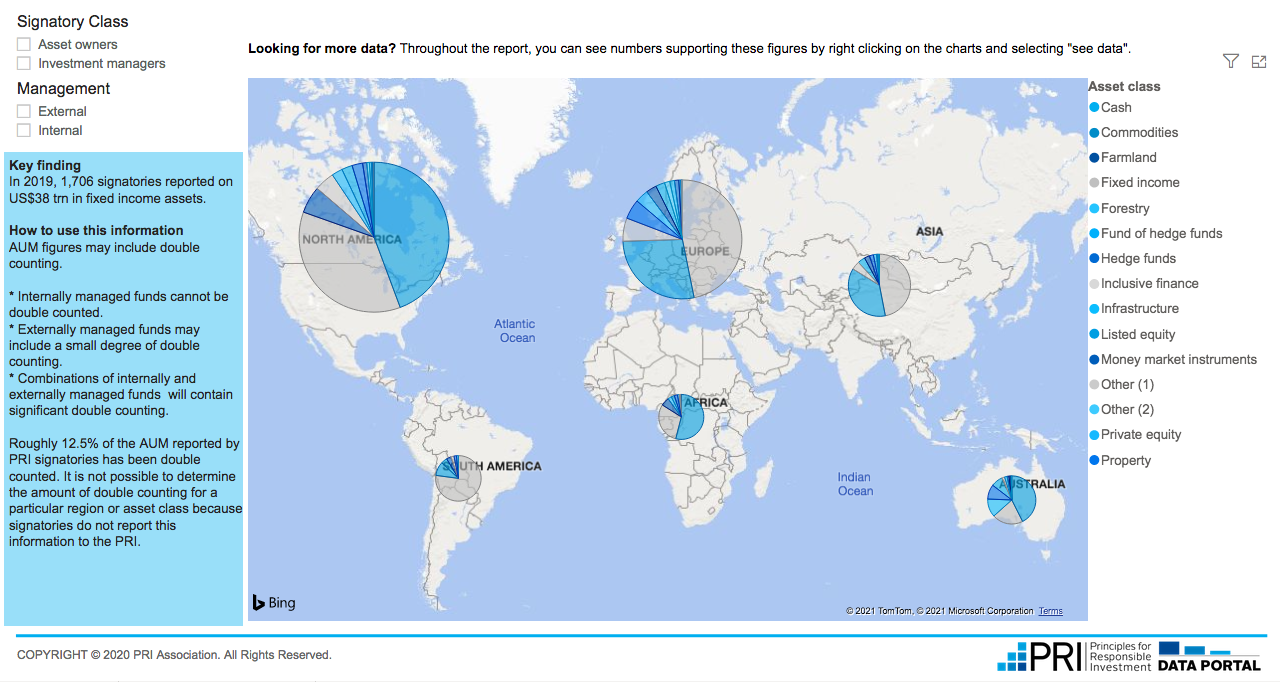 *See links to more snapshot report below
*See links to more snapshot report below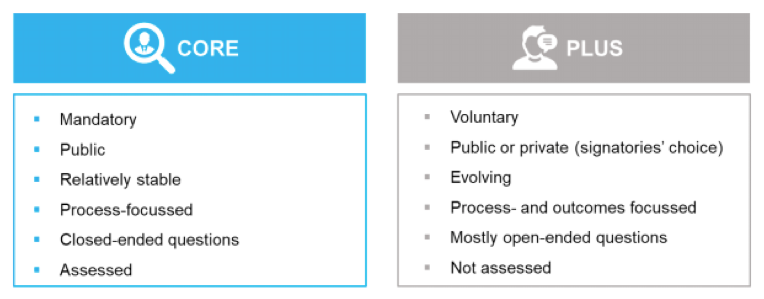

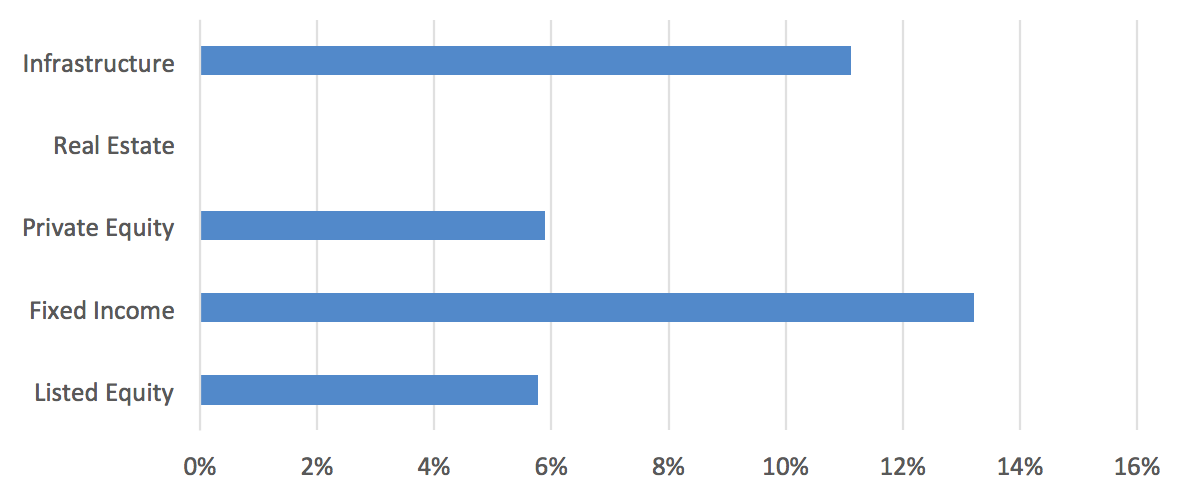
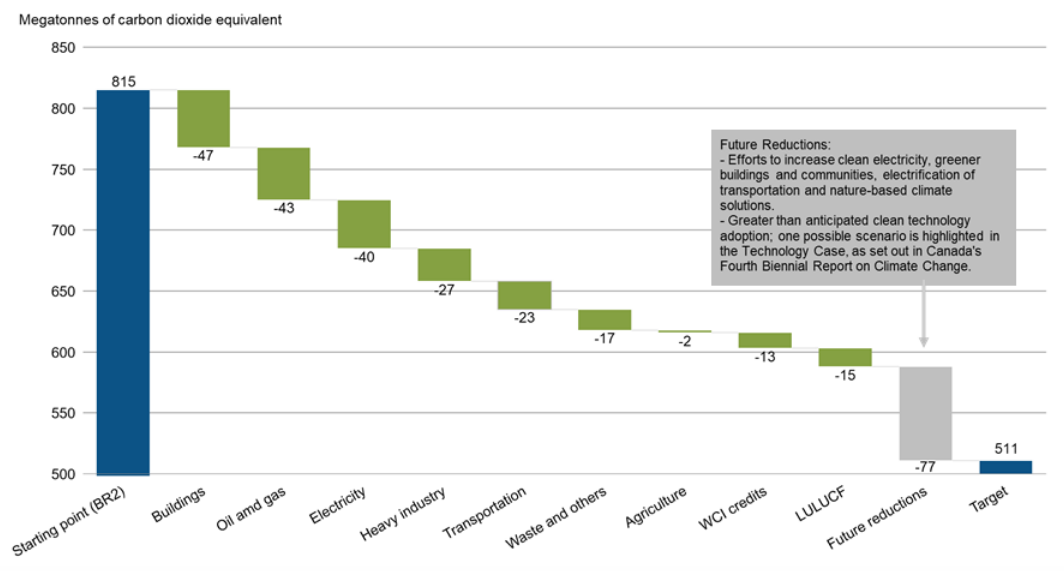 Source: Government of Canada, Environment and Climate Change: Progress Towards Canada’s Greenhouse Gas Emissions, 2019
Source: Government of Canada, Environment and Climate Change: Progress Towards Canada’s Greenhouse Gas Emissions, 2019